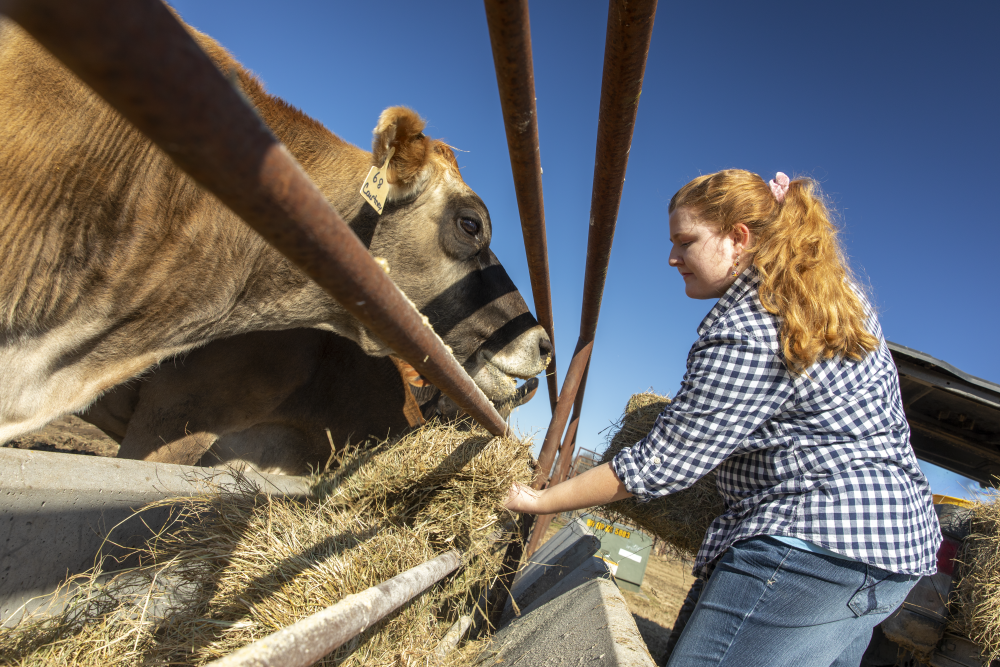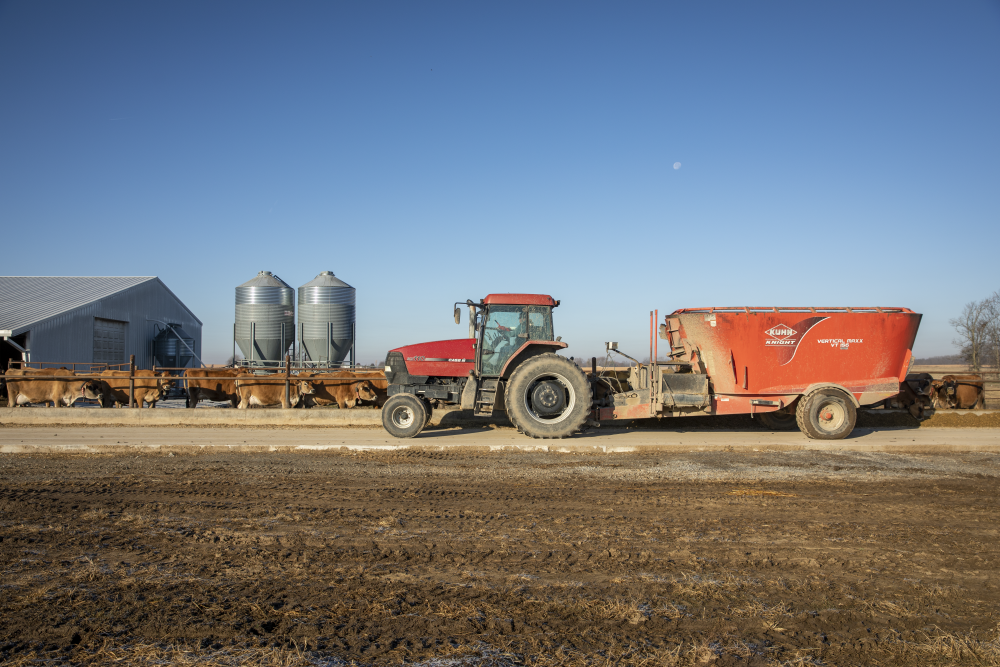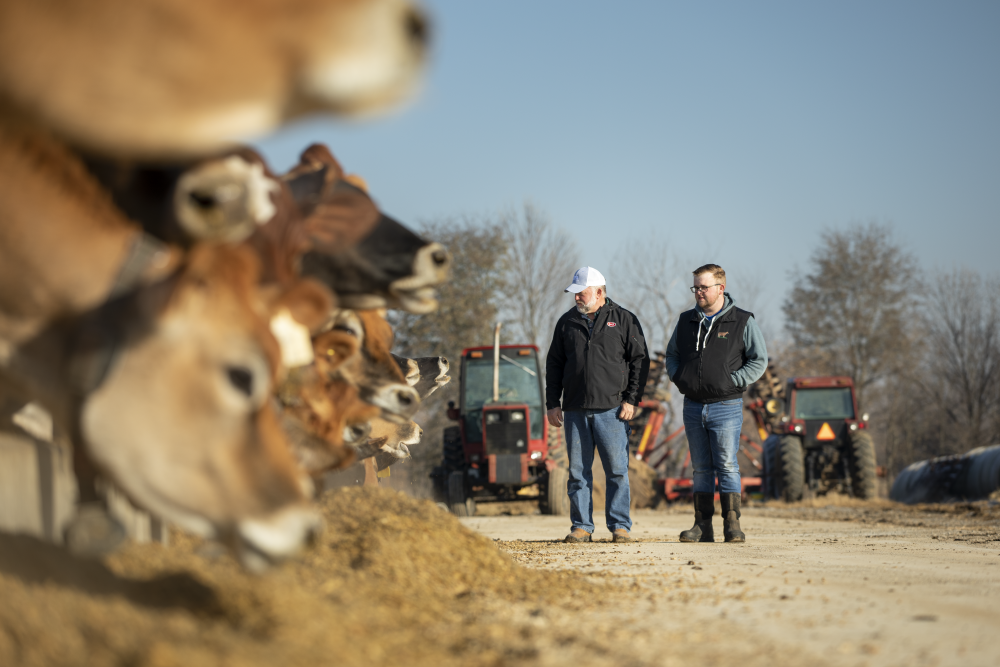Logan Courtney of Courtney Farms in Chouteau, Oklahoma, is fascinated by dairy cows. He’s the sixth generation of a farm family, but he didn’t grow up on a dairy farm. His family milked a small herd of pedigreed Ayrshires until the late 1950s, when they shifted their operation to focus on raising beef cattle and crops. That was about 40 years before Logan was born. But something in him was drawn to dairy.
Family lore has it that when he was two years old, he told his mother he wanted to milk cows when he grew up. However, it wasn’t until he was 12 that he had a chance to explore dairy life in detail through his 4-H club. He was hooked. Logan wanted to open his own dairy operation, but he knew building a farm from the ground up wouldn’t be an easy task.
“I wanted to do something that was my own and still be involved in my family’s farm,” he said. “But in the dairy industry you don’t meet a lot of people starting from scratch. I didn’t have the cows or equipment already. I had a lot more debt.”



Logan initially hoped to open a traditional parlor with multiple stalls for milking. He researched his options and priced used equipment. Without an existing infrastructure in place, he soon found a traditional parlor wasn’t a viable option for him. But his research led him to an innovative solution: robotic milkers.
“Robotics were a more practical route to take. The milker provides us a more flexible lifestyle to get our other work done, which was important with us being a pretty diverse farming operation. It also provides a really good environment for the dairy cows,” he said. “The robot eliminates a lot of a cow’s stress and provides a good quality of life for the animals. That was really important to us.”
The milker is part computer, part mechanical device and comes in a self-contained stall. When each cow steps up to the stall, the computer scans a special collar unique to the cow. The collar tracks data like when the cow was last milked. If it’s been at least four hours since her last milking, a gate opens for her to enter the stall. Once she’s inside, a laser scans her udder to determine the exact locations of her teats. The machine cleans each teat with brush and rinse cycles. Then it attaches the cups and begins to milk. As a reward, the cow gets a sweet treat in the stall — feed flavored with molasses. When milking is complete, an exit gate opens and the cow is free to go graze the pasture. The whole process takes less than 10 minutes.
Because a robotic milker makes the same noises and has the same smells every milking, it can be less stressful on the cows. It also provides the animals with a degree of autonomy. They can milk on their own schedules.
“Cows are creatures of habit. They like the same routine and the robot provides that routine,” Logan said. “Plus, they have a lot more opportunity to get milked, which helps with our production.”
When Logan decided to install a robotic system, his was the first dairy in Oklahoma to do so. Today, he helps other farmers explore that option by letting them tour his operation and providing valuable insight.
“Robots aren’t for everyone,” he said. “Just like with any addition, you have to do what works for your operation. You’ve really got to look at your own farming setup and ask if it’s financially feasible.”
Robots aren’t foolproof, either. A thunderstorm at 2 a.m. means Logan has to get up and reboot the system.
Still, a robot made sense for Logan financially and operationally. It allowed him to focus more on caring for the cows between milking to ensure their health and comfort. That effort paid off when one of his Jersey cows recently broke the world record for the amount of fat in her lactation.
“Seeing the cows we’ve bred over this short amount of time go on to classify well and win production awards makes that 2 a.m. problem seem a lot smaller,” he said.
Thanks to robotic technology, Logan has realized his dream of becoming a dairy farmer. He loves being his own boss. He loves being able to help on his family’s farm. But most of all, just like that two-year-old boy, he loves the cows.
“The most rewarding part is being able to wake up every morning and be excited to go see the cows,” he said.